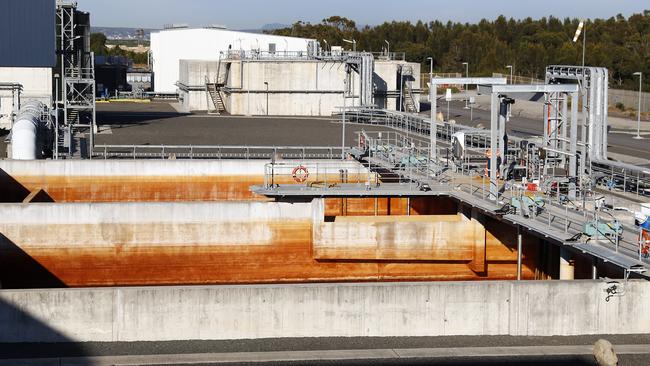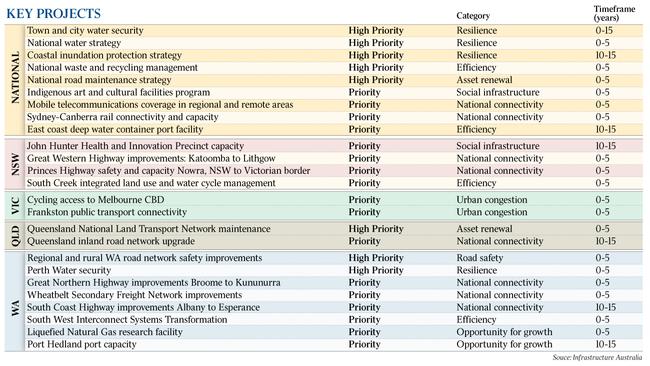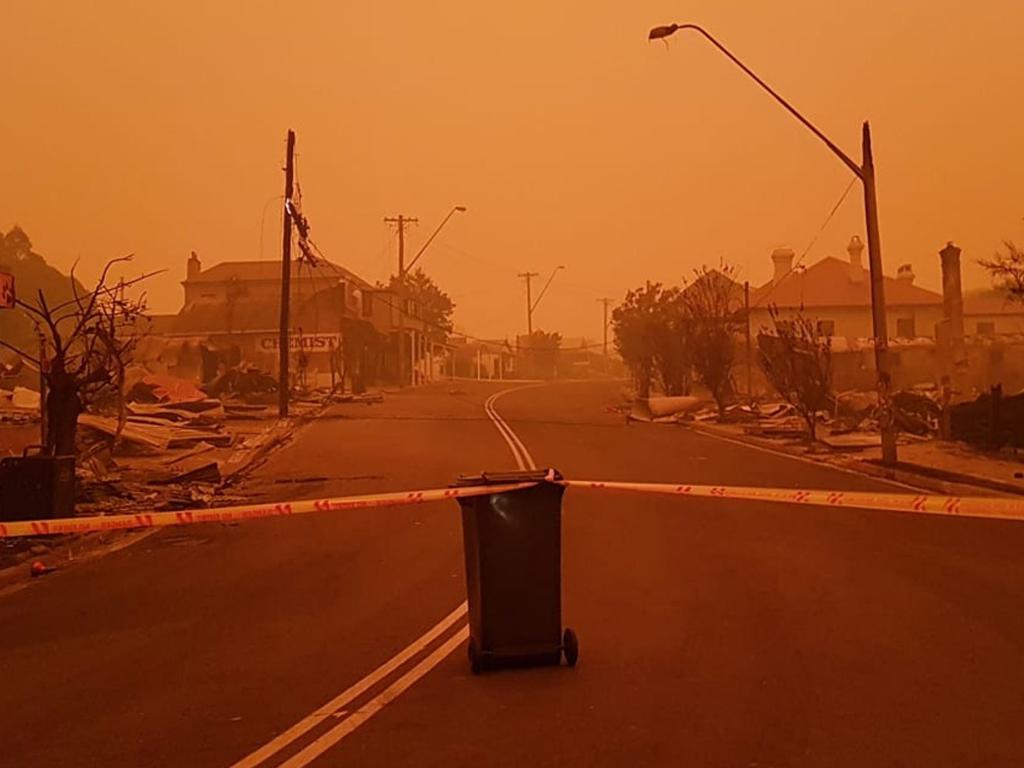Desalination and recycling a fix for drought, says Infrastructure Australia
The future water security of Australian cities and towns could rely on desalination and water recycling plants.

The future water security of Australian cities and towns could rely on desalination and water recycling plants as part of a national strategy to more carefully manage the country’s most precious resource.
The proposals spearhead Infrastructure Australia’s new list of high-priority initiatives, and follow a summer in which towns such as Gloucester in NSW and Queensland’s Stanthorpe were forced to truck in water.
Those experiences have highlighted regional Australia’s need to diversify away from a single source of water such as dams, both to build resilience against extreme weather and to meet the longer-term demand from a growing population, farming and industry.
The extremes of the recent summer also highlighted the importance of rolling out high-priority infrastructure projects such as upgrades to mobile telecommunications coverage in regional and remote areas, Infrastructure Australia chief executive Romilly Madew said.
Roads, wooden bridges and telecommunications towers had been lost to firestorms, leaving those who were trying to evacuate, stranded and unable to contact emergency services.
“We’ve just got to consider the recent bushfires and floods that we’ve had around Australia, and the impact that has had on our critical infrastructure,” Ms Madew said.
“We need to be forward looking and forward thinking when we’re working on our resilience of infrastructure in the future.”
IA said developing new water resources, via projects such as water recycling and desalination plants, could be part of the solution in defending against the risk of “severe urban water shortages” of the type experienced during the most recent summer.
Regional towns often rely on single sources of water supply, with no physical link to an alternative, IA said in its 2020 Infrastructure Priority List report.
“The lack of supply diversification creates further water security risks for these communities,” the report said.

IA’s chief of infrastructure assessment, David Tucker, said there was “a challenge around portability of water between catchments”. Managing demand was also an issue to be addressed, he said. “There’s a growing challenge of consumption levels increasing after the drought and the need to maintain that focus in the intervening period.”
A long-term national water strategy should be developed within five years to guide governments, businesses and individuals “on how to efficiently and sustainably capture, use and manage water”, the report said. The Barwon-Darling, Macquarie and Lower Darling rivers “all have critical water shortages”. The report also highlighted the impact of a changing climate on the nation’s water resources.
Balancing the various uses of water resources “and ensuring the health of streams, groundwater and ecosystems is crucial for maintaining reliable access to water,” the report said.
“We are, like many people, identifying water as a nationally significant issue,” Ms Madew said.
“You cannot miss the fact that there are compounding issues at the moment when it comes to water.
“It’s appropriate that Infrastructure Australia use this opportunity to highlight these issues.”
Heavy rains in February filled dams and rivers, relieving the immediate threat of water shortages, but Ms Madew said there was a risk people would lose their focus on water management as a long-term issue that needed to be addressed.
“We know we will come out of drought but what we are recognising is that we know we’ll go back into drought.
“We need to keep it on peoples’ radars and we need a long-term strategy on water.
“We need to keep it on the agenda and identify it as a really important issue,” she said.
“When it comes to water, the federal government has acknowledged this as an issue and have created the National Water Grid Authority, and they are working very closely with their state counterparts.
“We are making sure it stays on the agenda.”
IA is responsible for identifying problems, challenges and opportunities of national significance.
Each year it takes submissions and produces an infrastructure priority list, which includes initiatives that are not yet attached to a specific project or projects.
It also identifies projects that are yet to begin construction.
In creating the list, IA leaves it up to local, state, and federal governments, as well as businesses, to offer solutions and find funding, Ms Madew said.
The proposals around a national water strategy enhancing the water security of towns and cities were two of five new, national “high-priority” initiatives identified by the independent advisory body in its 2020 report.
The other three were proposals for a coastal inundation protection strategy, an initiative around national waste and recycling management, and a national road maintenance strategy.
IA’s priority list also included new national initiatives around developing an indigenous art and cultural facilities program, a proposal to improve mobile telecommunications coverage in regional and remote areas, improving rail links between Canberra and Sydney, and expanding east coast ports to allow the docking of the new breed of larger container ships.






To join the conversation, please log in. Don't have an account? Register
Join the conversation, you are commenting as Logout